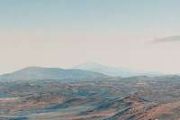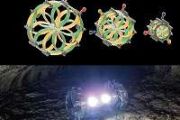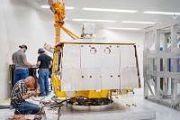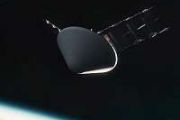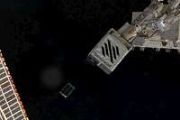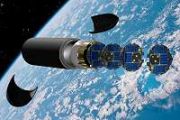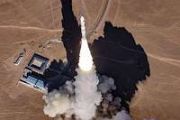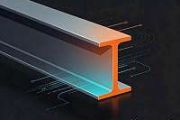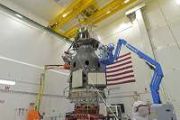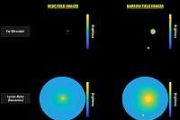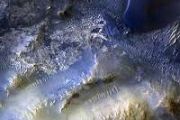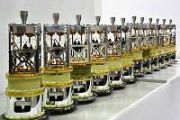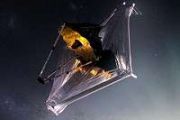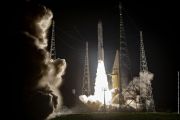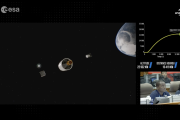
Copernical Team
Solar sails could guide interplanetary travel, says new study
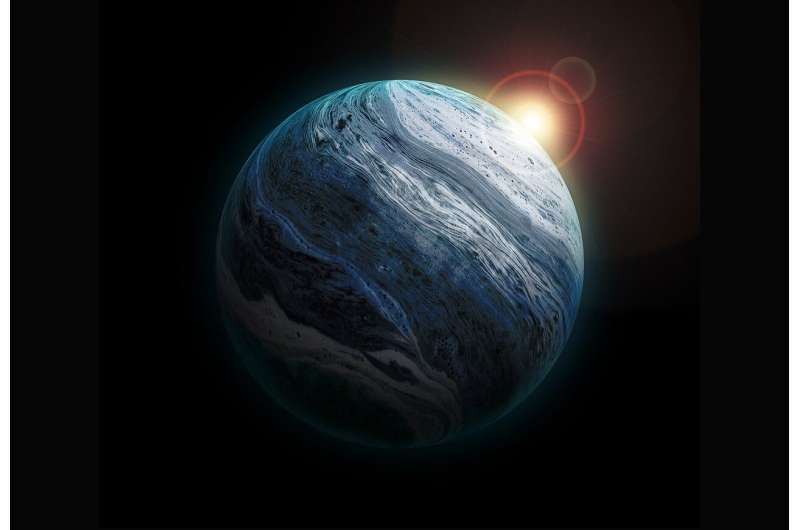
Space travel has brought us to our next-door neighbor, the moon, and to the depths of our larger solar community inhabited by giants such as Saturn and Jupiter.
In 1982, Voyager 2 whisked past Uranus closer than any other spacecraft has since, and now is sailing—46 years after its launch—through the constellation of Pavo, some 179 light years from Earth.
But there have been few comparable satellite missions in recent years. Cost is the main obstacle, but time frame is also a factor. The design for such long journeys takes years to calculate, and planning and construction of a space vehicle would take about a decade. Factoring in the time a satellite would require to reach distant targets means our next peek into the stars will likely not come any time soon.
A team of scientists led by Slava Turyshev of the Jet Propulsion Laboratory at the California Institute of Technology, which launched the Voyager satellites back in 1977, is anxious to get space exploration back on track. The team proposes a novel means of travel that could get us to the stars faster and cheaper.
SpaceX postpones test flight of Starship, world's biggest rocket
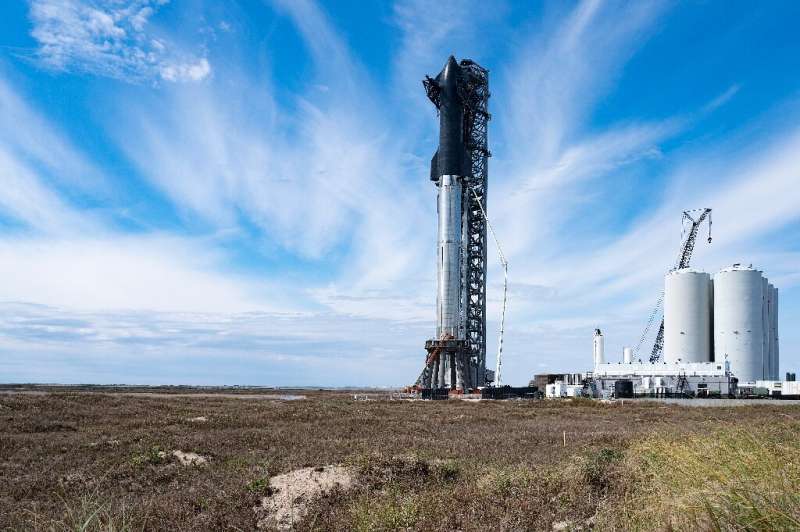
SpaceX on Monday postponed the first test flight of Starship, the most powerful rocket ever built, designed to send astronauts to the Moon and Mars and beyond.
Liftoff of the giant rocket was called off just minutes ahead of the scheduled launch time because of a pressurization issue in the booster stage, SpaceX officials said.
SpaceX said the launch will be delayed for at least 48 hours.
Starship had been scheduled to blast off at 8:20 am Central Time (1320 GMT) from Starbase, the SpaceX spaceport in Boca Chica, Texas.
The US space agency NASA has picked the Starship spacecraft to ferry astronauts to the Moon in late 2025—a mission known as Artemis III—for the first time since the Apollo program ended in 1972.
SpaceX scrubs Starship launch, runs clock down to 10 secs for wet dress rehearsal
 SpaceX on Monday postponed the first test flight of Starship, the most powerful rocket ever built. Liftoff of the giant rocket was called off just minutes ahead of the scheduled launch time because of a pressurization issue, SpaceX officials said.
SpaceX on Monday postponed the first test flight of Starship, the most powerful rocket ever built. Liftoff of the giant rocket was called off just minutes ahead of the scheduled launch time because of a pressurization issue, SpaceX officials said. Tiny magnetic episodes may have large consequences on the Sun
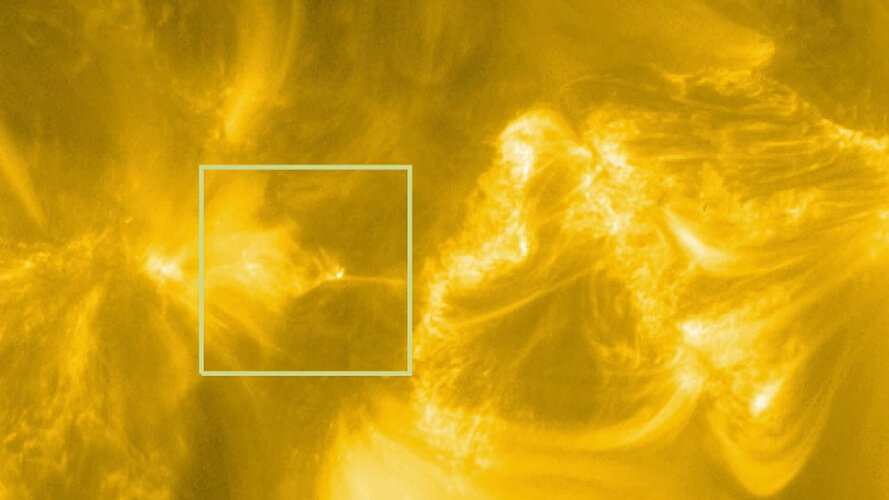 Video:
00:00:42
Video:
00:00:42
ESA’s Solar Orbiter may have taken another step towards solving the eighty-year-old mystery of why the Sun’s outer atmosphere is so hot.
On 3 March 2022, just a few months into Solar Orbiter’s nominal mission, the spacecraft’s Extreme Ultraviolet Imager (EUI) returned data showing for the first time that a magnetic phenomenon called reconnection was taking place persistently on tiny scales.
At that time, the spacecraft was about halfway between the Earth and the Sun. This enabled coordinated observations with NASA’s Solar Dynamics Observatory (SDO) and Interface Region Imaging Spectrograph (IRIS) missions. The data from the three missions was
ESA developing concepts for commercial-scale Space-Based Solar Power plants

ESA has signed contracts for two parallel concept studies for commercial-scale Space-Based Solar Power plants, representing a crucial step in the Agency’s new SOLARIS initiative – maturing the feasibility of gathering solar energy from space for terrestrial clean energy needs.
SpaceX Starship, world's biggest rocket, set for first test flight
 SpaceX is counting down to the first test flight on Monday of Starship, the most powerful rocket ever built, designed to send astronauts to the Moon and Mars and beyond.
The giant rocket is scheduled to blast off from Starbase, the SpaceX spaceport in Boca Chica, Texas, at 8:00 am Central Time (1300 GMT).
Fallback times are scheduled for later in the week if Monday's launch attempt is de
SpaceX is counting down to the first test flight on Monday of Starship, the most powerful rocket ever built, designed to send astronauts to the Moon and Mars and beyond.
The giant rocket is scheduled to blast off from Starbase, the SpaceX spaceport in Boca Chica, Texas, at 8:00 am Central Time (1300 GMT).
Fallback times are scheduled for later in the week if Monday's launch attempt is de What to know about 1st test flight of SpaceX's big Starship
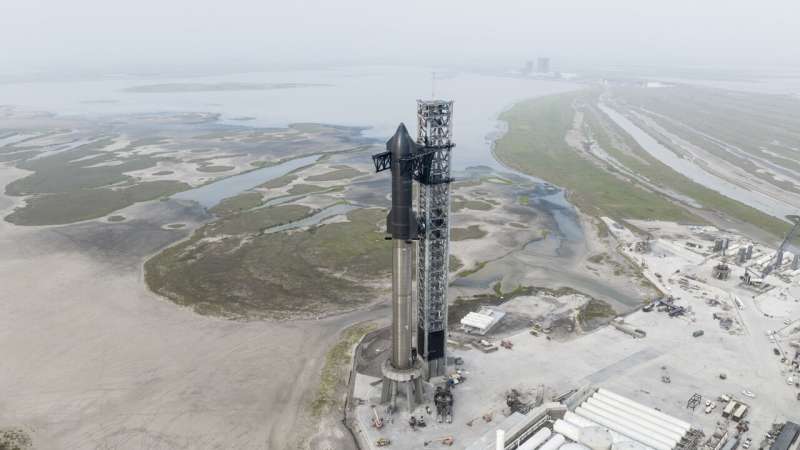
Elon Musk's SpaceX is about to take its most daring leap yet with a round-the-world test flight of its mammoth Starship.
It's the biggest and mightiest rocket ever built, with the lofty goals of ferrying people to the moon and Mars.
Jutting almost 400 feet (120 meters) into the South Texas sky, Starship could blast off as early as Monday, with no one aboard. Musk's company got the OK from the Federal Aviation Administration on Friday.
It will be the first launch with Starship's two sections together. Early versions of the sci-fi-looking upper stage rocketed several miles into the stratosphere a few years back, crashing four times before finally landing upright in 2021.
Intelsat to Extend Life of Satellite with new Mission Extension Pod
 Intelsat, operator of one of the world's largest integrated satellite and terrestrial networks and leading provider of inflight connectivity (IFC), ordered a Mission Extension Pod (MEP) from Northrop Grumman Corporation's SpaceLogistics, which will add life to an Intelsat satellite and provide uninterrupted services to many customers.
The MEP "jet pack" will be installed by SpaceLogistics'
Intelsat, operator of one of the world's largest integrated satellite and terrestrial networks and leading provider of inflight connectivity (IFC), ordered a Mission Extension Pod (MEP) from Northrop Grumman Corporation's SpaceLogistics, which will add life to an Intelsat satellite and provide uninterrupted services to many customers.
The MEP "jet pack" will be installed by SpaceLogistics' AAC Clyde Space SDaaS satellite successfully launched by SpaceX
 EPICHyper-1, a 6U AAC Clyde Space EPIC VIEW satellite, was successfully launched on the SpaceX Transporter 7 mission on April 15, 2023. The satellite will deliver Earth observation data to Canadian company Wyvern Inc., under an exclusive Space Data as a Service (SDaaS) deal. It is planned to be followed by the launch of a further two 6U satellites during 2023.
The satellite lifted off on t
EPICHyper-1, a 6U AAC Clyde Space EPIC VIEW satellite, was successfully launched on the SpaceX Transporter 7 mission on April 15, 2023. The satellite will deliver Earth observation data to Canadian company Wyvern Inc., under an exclusive Space Data as a Service (SDaaS) deal. It is planned to be followed by the launch of a further two 6U satellites during 2023.
The satellite lifted off on t ispace Mission 1 completing key milestones after launch
 ispace reports that its HAKUTO-R Mission 1 Lunar Lander has completed all planned orbital control maneuvers, completing Success 8 of the Mission 1 Milestones.
The Mission 1 Lander performed the final orbital control maneuver in accordance with the mission operation plan, at 10:08 (JST), on April 13, 2023, under the direction of ispace engineers at the HAKUTO-R Mission Control Center in Nih
ispace reports that its HAKUTO-R Mission 1 Lunar Lander has completed all planned orbital control maneuvers, completing Success 8 of the Mission 1 Milestones.
The Mission 1 Lander performed the final orbital control maneuver in accordance with the mission operation plan, at 10:08 (JST), on April 13, 2023, under the direction of ispace engineers at the HAKUTO-R Mission Control Center in Nih 

